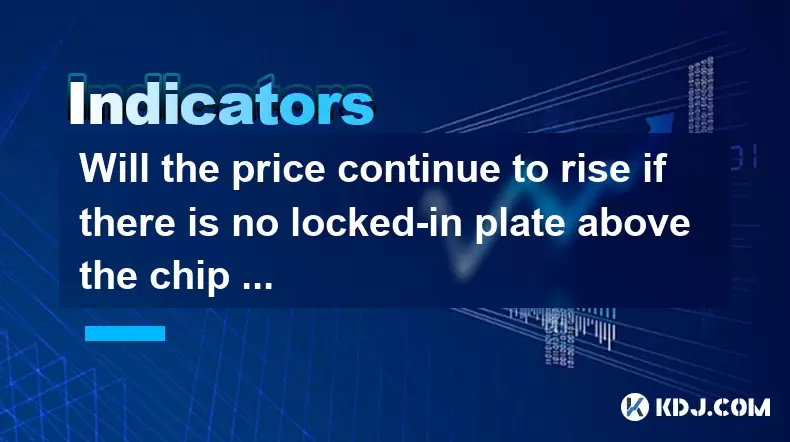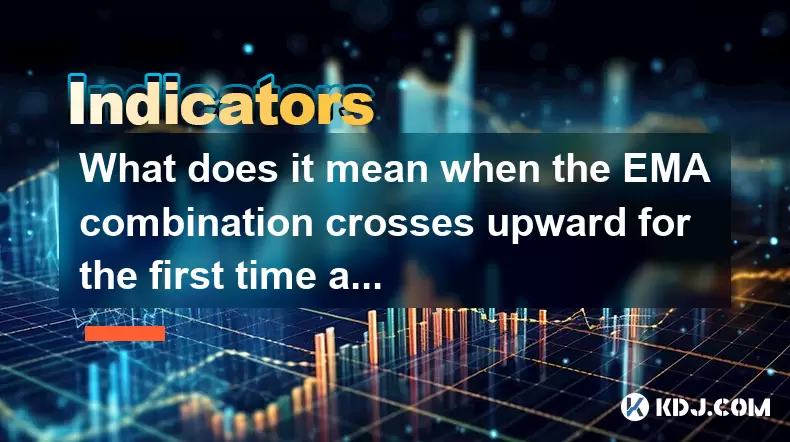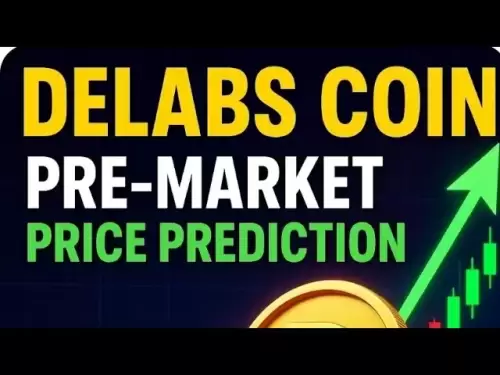-
 Bitcoin
Bitcoin $118600
0.36% -
 Ethereum
Ethereum $3855
1.06% -
 XRP
XRP $3.195
-0.09% -
 Tether USDt
Tether USDt $1.000
-0.04% -
 BNB
BNB $844.5
6.23% -
 Solana
Solana $191.3
2.83% -
 USDC
USDC $0.9997
-0.01% -
 Dogecoin
Dogecoin $0.2376
0.10% -
 TRON
TRON $0.3242
0.83% -
 Cardano
Cardano $0.8222
0.13% -
 Hyperliquid
Hyperliquid $45.26
6.53% -
 Sui
Sui $4.200
-2.56% -
 Stellar
Stellar $0.4336
-1.24% -
 Chainlink
Chainlink $18.86
0.28% -
 Hedera
Hedera $0.2796
-1.75% -
 Bitcoin Cash
Bitcoin Cash $583.3
-1.84% -
 Avalanche
Avalanche $27.06
8.09% -
 Litecoin
Litecoin $112.3
-1.16% -
 Toncoin
Toncoin $3.353
0.58% -
 UNUS SED LEO
UNUS SED LEO $8.968
-0.11% -
 Shiba Inu
Shiba Inu $0.00001395
-0.54% -
 Ethena USDe
Ethena USDe $1.001
-0.03% -
 Uniswap
Uniswap $10.76
0.69% -
 Polkadot
Polkadot $4.175
0.26% -
 Monero
Monero $326.7
1.07% -
 Bitget Token
Bitget Token $4.665
1.61% -
 Dai
Dai $0.9998
-0.02% -
 Pepe
Pepe $0.00001271
0.32% -
 Cronos
Cronos $0.1416
2.01% -
 Aave
Aave $299.3
1.15%
Will the price continue to rise if there is no locked-in plate above the chip peak?
A missing locked-in plate above the chip peak signals weak institutional accumulation, raising the risk of price rejection and reversal despite short-term rallies.
Jul 28, 2025 at 05:21 am

Understanding Chip Peaks and Locked-In Plates in Cryptocurrency Markets
In the context of cryptocurrency trading, the term chip peak refers to the price level at which the highest volume of transactions (or "chips") has occurred over a certain period. This concept is borrowed from on-chain and volume profile analysis, where traders assess where the majority of buying and selling has taken place. A locked-in plate above the chip peak indicates a price zone where significant buying pressure has accumulated, often due to large investors or institutions accumulating assets at higher levels. This accumulation creates a support zone that can act as a floor for future price movements.
When there is no locked-in plate above the chip peak, it suggests that there has been minimal buying activity at prices higher than the peak. This absence can signal weak conviction among larger players at elevated price levels. Without this accumulation, upward momentum may lack the necessary fuel to sustain a rally. In technical terms, the lack of a locked-in plate removes a psychological and structural barrier that could otherwise serve as a confidence zone for bulls.
Price Behavior in the Absence of Accumulation Zones
Cryptocurrency prices are heavily influenced by supply and demand dynamics, and the presence or absence of accumulation zones plays a critical role. If there is no locked-in plate above the chip peak, the market may experience a phenomenon known as distribution, where holders begin to sell into strength rather than accumulate. This behavior often leads to price rejection at or near the chip peak.
- Traders observe volume profile indicators to detect whether new highs are accompanied by increasing volume at higher price levels.
- On-chain data tools like Glassnode or CryptoQuant can reveal whether exchange outflows or wallet accumulation supports a breakout.
- If wallets show no significant movement of coins into long-term storage above the peak, it implies lack of confidence in sustained higher prices.
Without evidence of new capital entering at elevated levels, any price rise above the chip peak may be short-lived and driven by retail speculation rather than institutional backing.
Technical Implications of Missing Accumulation Structures
From a technical analysis perspective, the formation of a locked-in plate is akin to creating a new base. Bases are consolidation zones where buyers absorb supply, setting the stage for the next leg up. When such a base does not form above the chip peak, several scenarios unfold:
- The price may retest the chip peak as resistance, especially if it was previously a point of high selling volume.
- Indicators like the Volume Profile Visible Range (VPVR) will show a void above the peak, indicating low participation at higher prices.
- Moving averages, particularly the 50-day and 200-day, may converge near the chip peak, reinforcing it as a dynamic resistance zone.
Chart patterns such as double tops or head and shoulders often emerge when price fails to establish higher-timeframe consolidation above prior highs. These patterns reflect exhaustion and are frequently accompanied by declining relative volume, further confirming the absence of a sustainable breakout.
On-Chain Data and Whale Activity Analysis
To assess whether a price rise can continue without a locked-in plate, on-chain metrics provide crucial insights. Large holders, often referred to as whales, leave footprints through their transaction behavior. Monitoring their activity helps determine if the rally has underlying strength.
- Use Santiment or IntoTheBlock to track whale wallet movements. A surge in transfers to exchanges from large wallets may signal profit-taking.
- Analyze netflow data from exchanges: if inflows exceed outflows above the chip peak, it suggests distribution.
- Watch for newly created addresses purchasing at higher prices — a sign of fresh demand.
If whale accumulation is absent and exchange reserves grow during price advances, the rally lacks structural support. Even if short-term momentum pushes prices higher, the absence of whale buying above the chip peak increases the likelihood of a reversal.
Market Sentiment and Liquidity Conditions
Market sentiment often drives short-term price action, especially in highly speculative assets like cryptocurrencies. However, sentiment alone cannot sustain a trend without corresponding liquidity and order book depth.
- Check funding rates on perpetual futures markets. Extremely positive funding may indicate over-leveraged long positions, increasing vulnerability to liquidations.
- Examine order book imbalances on major exchanges like Binance or Bybit. Thin buy walls above the chip peak suggest limited support.
- Monitor open interest in futures markets. Rising open interest during a price rise without a locked-in plate can be deceptive — it may reflect speculative leverage rather than real buying.
When liquidity is shallow above key resistance levels, even small sell orders can trigger cascading liquidations, leading to sharp corrections. This scenario is common when price advances are not backed by deep accumulation.
Practical Steps to Assess Sustainability of Price Rises
Traders and investors can follow a structured approach to evaluate whether a price rise is sustainable in the absence of a locked-in plate:
- Pull up the volume profile on TradingView or specialized platforms like CoinGlass to visualize concentration of trades.
- Overlay on-chain accumulation metrics such as NUPL (Net Unrealized Profit/Loss) to determine if profit-taking is occurring.
- Use exchange flow data to compare inflows and outflows during price increases.
- Set alerts for large transactions (>100 BTC equivalent) using blockchain explorers or Whale Alert tools.
- Cross-reference price action with derivatives data to assess leverage and potential liquidation zones.
These steps allow for a comprehensive assessment of whether upward movement is supported by genuine demand or merely speculative momentum.
Frequently Asked Questions
What does a locked-in plate look like on a volume profile chart?
A locked-in plate appears as a dense horizontal bar on the volume profile, indicating high trading volume over a narrow price range. It typically forms after a breakout, showing that buyers have stepped in consistently at higher levels, creating a new base.
Can price still rise without whale accumulation?
Yes, price can rise temporarily due to retail buying, leverage, or market hype. However, such rallies often lack staying power and are prone to sharp reversals when early sellers take profits.
How do I identify a chip peak using on-chain tools?
Use platforms like Glassnode Studio to access realized price distribution or volume-weighted average cost (VWAP) by price. The price level with the highest concentration of realized transactions is typically the chip peak.
Does low volume above the chip peak always lead to a drop?
Not immediately. Low volume may allow price to rise with minimal resistance, but it also increases the risk of a swift reversal once selling pressure emerges, as there are few buyers to absorb the sell orders.
Disclaimer:info@kdj.com
The information provided is not trading advice. kdj.com does not assume any responsibility for any investments made based on the information provided in this article. Cryptocurrencies are highly volatile and it is highly recommended that you invest with caution after thorough research!
If you believe that the content used on this website infringes your copyright, please contact us immediately (info@kdj.com) and we will delete it promptly.
- Bitcoin, Fiat Devaluation, and Hedging: A New Yorker's Take
- 2025-07-28 22:50:12
- Trump Media, Bitcoin, and Options: A High-Stakes Gamble?
- 2025-07-28 23:10:13
- Elon Musk, SpaceX, and Bitcoin: A $153 Million Mystery
- 2025-07-28 22:30:12
- Pepe, Price Prediction, and Dogecoin: What's Next for Meme Coins?
- 2025-07-28 23:15:12
- Crypto, VCs, and Infrastructure: Building the Future, Not Just Betting on Memes
- 2025-07-28 22:50:12
- Ozak AI: Is This Crypto Gem Primed for a 2025 Takeoff?
- 2025-07-28 22:30:12
Related knowledge

What does it mean when the EMA combination crosses upward for the first time after sideways trading?
Jul 28,2025 at 03:43pm
Understanding the EMA and Its Role in Technical AnalysisThe Exponential Moving Average (EMA) is a widely used technical indicator in cryptocurrency tr...

What signal does the ROC send when it rises rapidly from a low level and breaks through the zero axis?
Jul 27,2025 at 10:15am
Understanding the Rate of Change (ROC) IndicatorThe Rate of Change (ROC) is a momentum-based oscillator used in technical analysis to measure the perc...

What does it mean when the price breaks through the double bottom neckline and the moving averages are arranged in a bullish pattern?
Jul 28,2025 at 10:57am
Understanding the Double Bottom PatternThe double bottom is a widely recognized reversal chart pattern in technical analysis, particularly within the ...

What signal does the DMA fast line cross the slow line above the zero axis?
Jul 28,2025 at 05:42am
Understanding the DMA Indicator and Its ComponentsThe DMA (Difference of Moving Averages) indicator is a technical analysis tool used in cryptocurrenc...

What does it mean that the rebound is blocked after the moving average is arranged in a short position for the first time?
Jul 26,2025 at 10:51am
Understanding the Short-Term Moving Average ConfigurationWhen traders refer to a 'short position arrangement' in moving averages, they are describing ...

What does it mean that the ZIGZAG low point is raised and the high point breaks through the previous peak?
Jul 28,2025 at 03:28am
Understanding the ZIGZAG Indicator in Cryptocurrency TradingThe ZIGZAG indicator is a technical analysis tool widely used in cryptocurrency trading to...

What does it mean when the EMA combination crosses upward for the first time after sideways trading?
Jul 28,2025 at 03:43pm
Understanding the EMA and Its Role in Technical AnalysisThe Exponential Moving Average (EMA) is a widely used technical indicator in cryptocurrency tr...

What signal does the ROC send when it rises rapidly from a low level and breaks through the zero axis?
Jul 27,2025 at 10:15am
Understanding the Rate of Change (ROC) IndicatorThe Rate of Change (ROC) is a momentum-based oscillator used in technical analysis to measure the perc...

What does it mean when the price breaks through the double bottom neckline and the moving averages are arranged in a bullish pattern?
Jul 28,2025 at 10:57am
Understanding the Double Bottom PatternThe double bottom is a widely recognized reversal chart pattern in technical analysis, particularly within the ...

What signal does the DMA fast line cross the slow line above the zero axis?
Jul 28,2025 at 05:42am
Understanding the DMA Indicator and Its ComponentsThe DMA (Difference of Moving Averages) indicator is a technical analysis tool used in cryptocurrenc...

What does it mean that the rebound is blocked after the moving average is arranged in a short position for the first time?
Jul 26,2025 at 10:51am
Understanding the Short-Term Moving Average ConfigurationWhen traders refer to a 'short position arrangement' in moving averages, they are describing ...

What does it mean that the ZIGZAG low point is raised and the high point breaks through the previous peak?
Jul 28,2025 at 03:28am
Understanding the ZIGZAG Indicator in Cryptocurrency TradingThe ZIGZAG indicator is a technical analysis tool widely used in cryptocurrency trading to...
See all articles

























































































